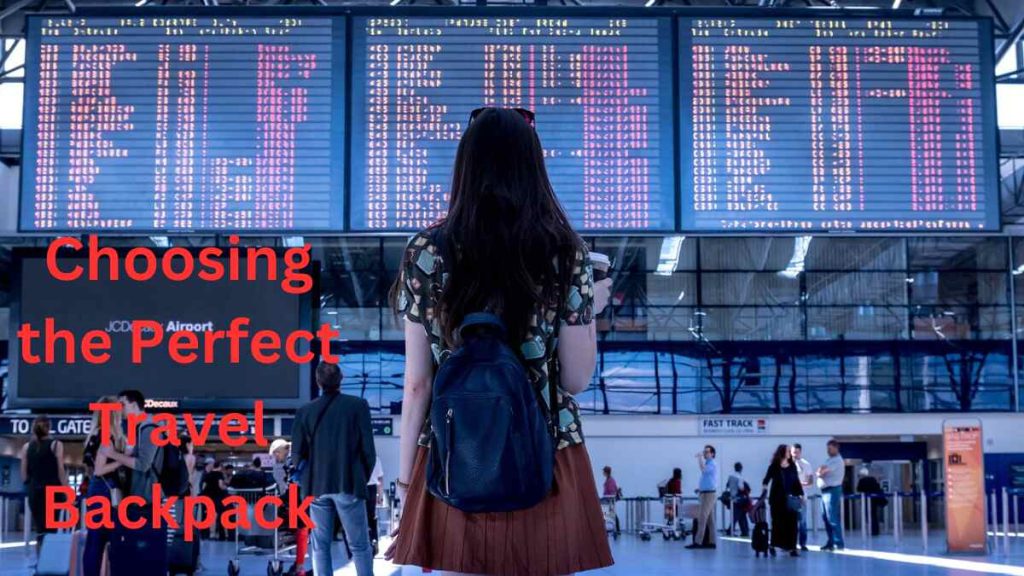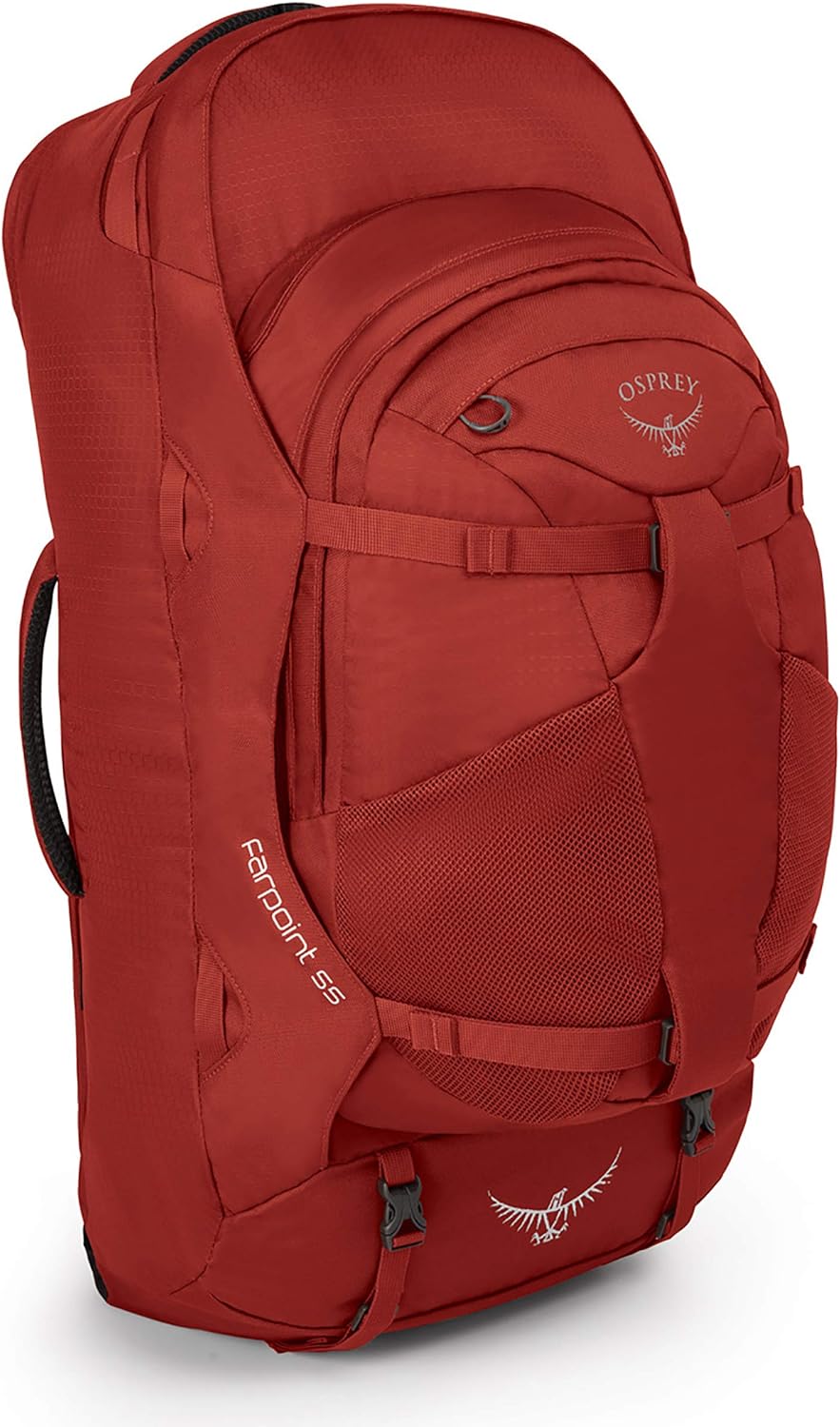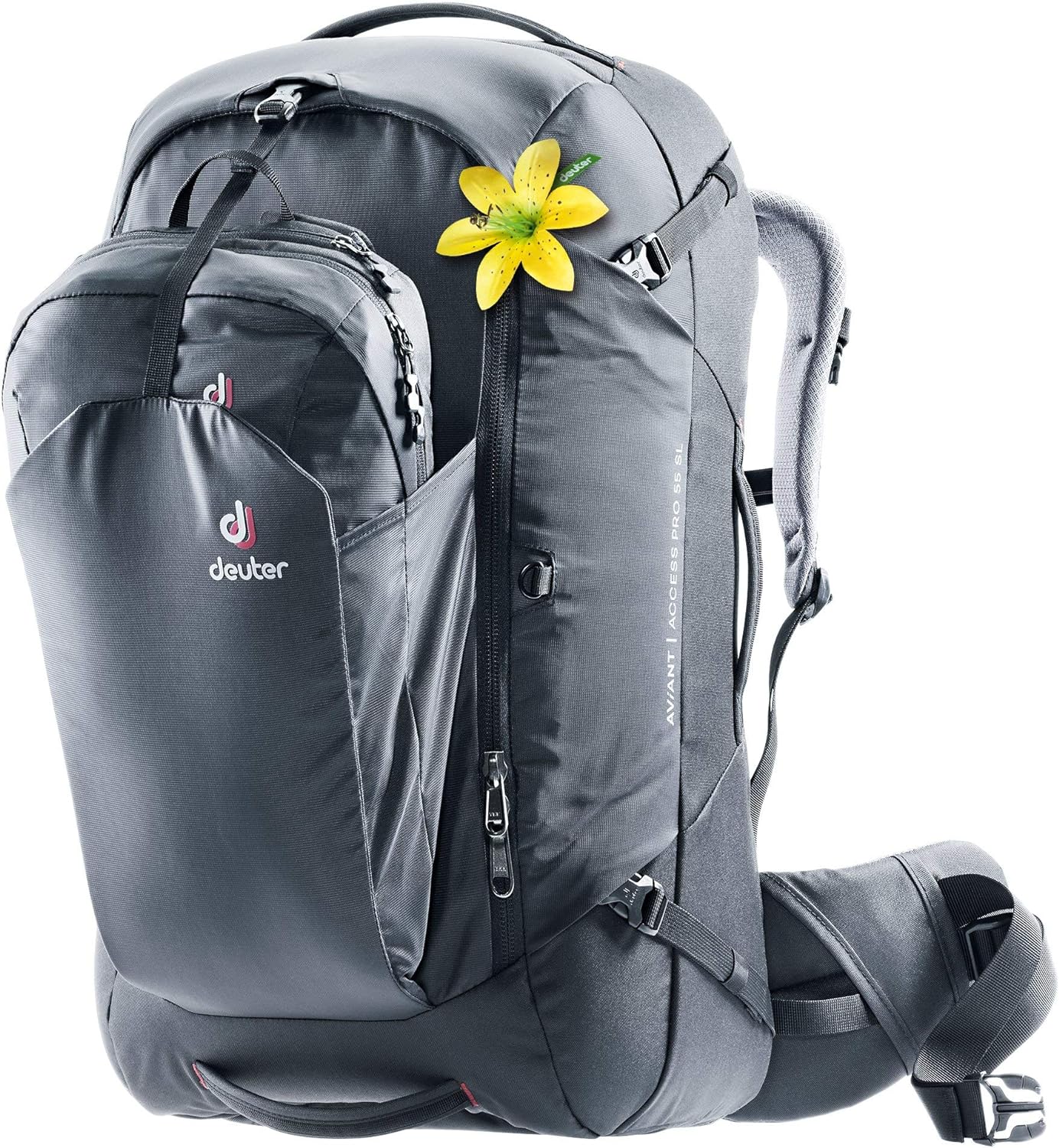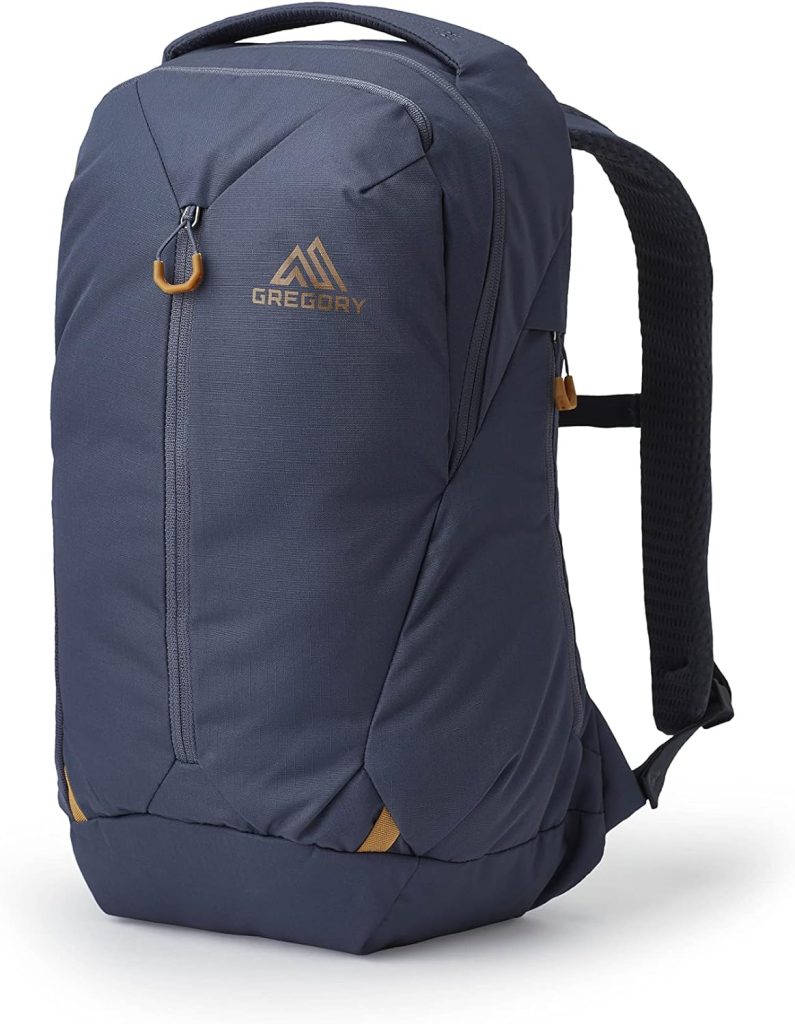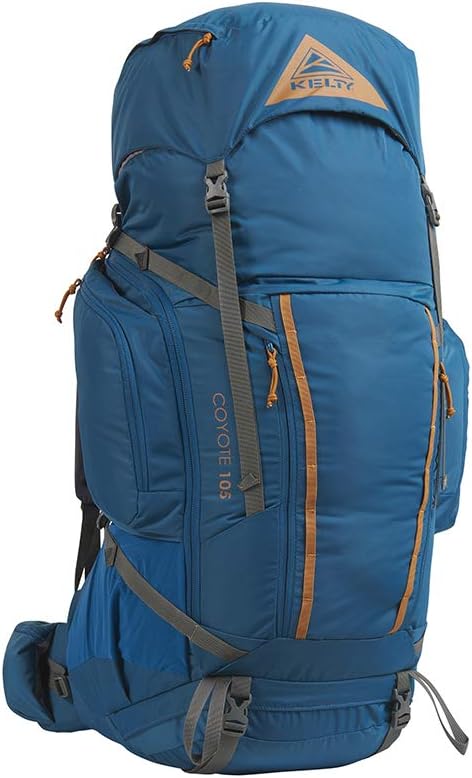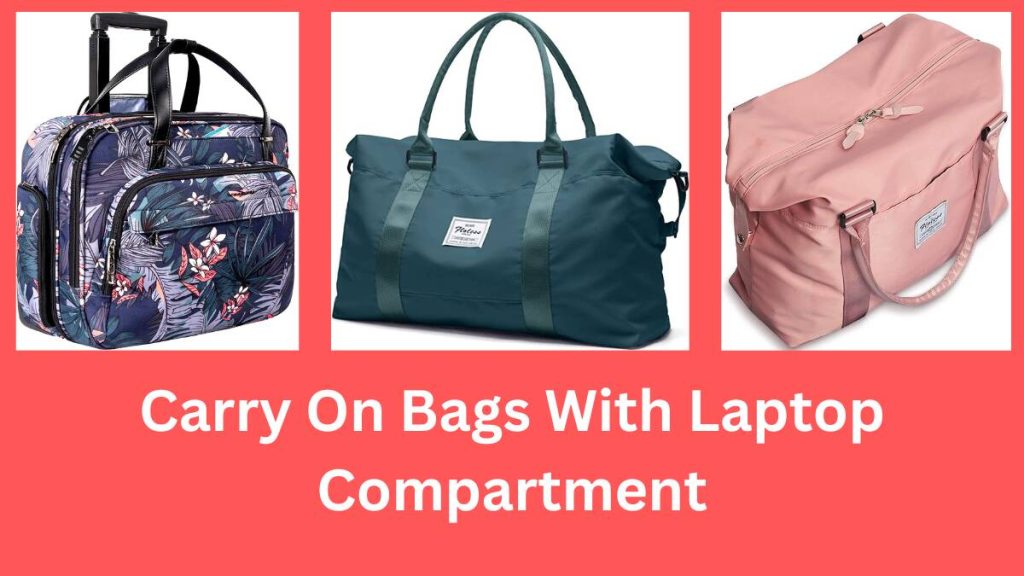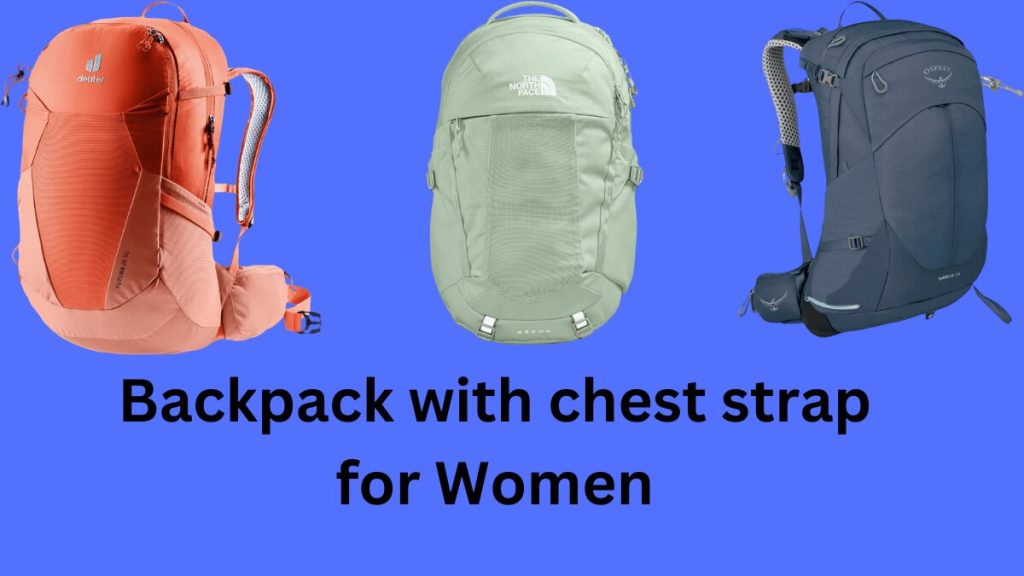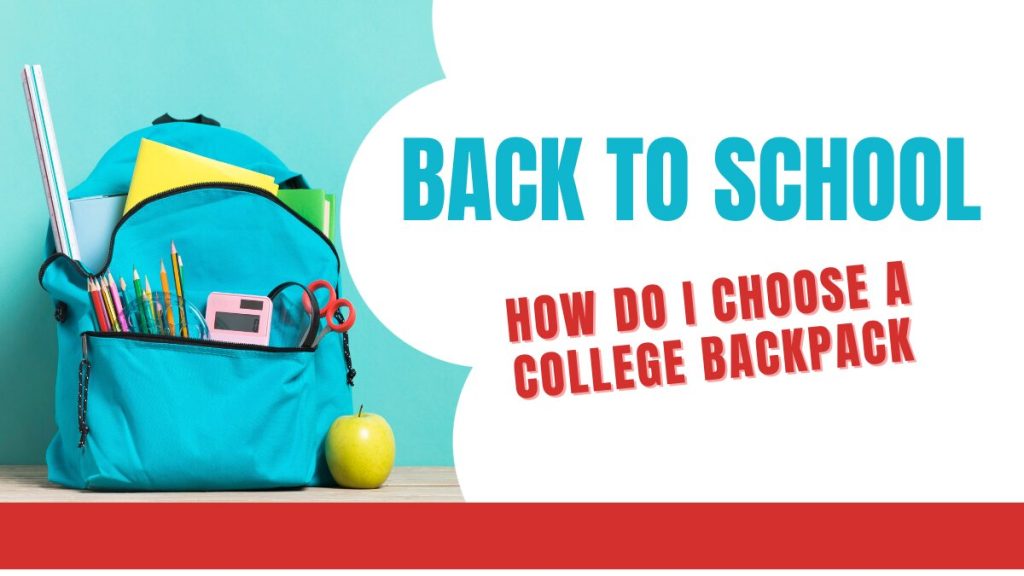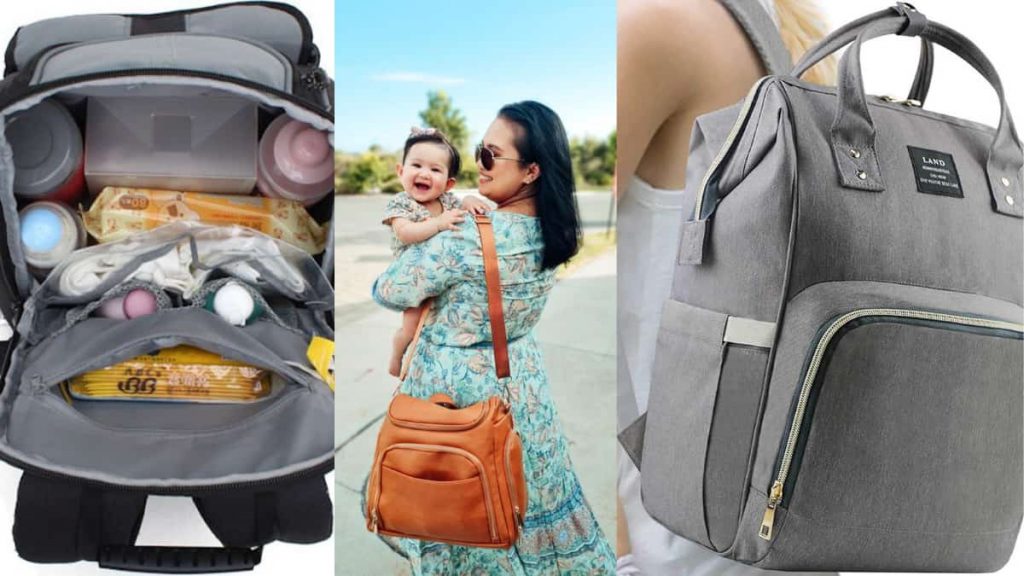Traveling, be it for business or pleasure, often involves carrying essentials and personal belongings. The right travel backpack can make your journey more comfortable, organized, and hassle-free. It’s not just a bag; it’s your travel companion. But Which backpack is best for traveling? Let’s delve into the key factors to consider when choosing the perfect travel backpack.
Importance of Selecting the Right Backpack for travelling
Selecting the right backpack for your travels is more important than you might think. Your backpack isn’t just a means to carry your belongings; it’s your loyal travel companion. A well-chosen backpack can make your journey smoother, more comfortable, and more organized, while the wrong one can lead to frustration and discomfort.
Key Factors to Consider
When choosing the best travel backpack, several key factors should be taken into consideration. Understanding your unique travel needs, selecting the right type of backpack, choosing the appropriate size, and evaluating materials, durability, comfort, and organization are all crucial elements in making an informed decision. In this comprehensive guide, we’ll explore each of these factors in depth, helping you find the perfect travel backpack to suit your individual requirements.
Which backpack is best for traveling? Types of Travel Backpacks
When it comes to choosing the right travel backpack, understanding the various types available is essential. Different types cater to different travel needs and styles. In this section, we’ll delve into the primary categories of travel backpacks.
A. Daypacks
Daypacks are compact, lightweight backpacks designed for short trips, day hikes, or city exploration. These backpacks are typically smaller in capacity, usually ranging from 20 to 30 liters. They are perfect for carrying your daily essentials, including water bottles, snacks, a light jacket, and personal items. Daypacks are ideal for travelers who prefer to keep things simple and travel light.
B. Hiking Backpacks
Hiking backpacks are specially designed for outdoor enthusiasts who love trekking and camping. These backpacks come in various sizes and configurations, with features such as hydration reservoir sleeves, adjustable straps for carrying outdoor gear like trekking poles, and reinforced stitching for added durability. Hiking backpacks are perfect for those who enjoy outdoor adventures and need a reliable backpack to carry their equipment and supplies.
C. Travel Backpacks
Travel backpacks are versatile and designed to cater to a wide range of travel scenarios. They often fall into different size categories, including daypacks, carry-on backpacks, and larger backpacks suitable for extended trips. Travel backpacks are known for their efficient organization, various compartments, and often feature comfort-enhancing elements like padded shoulder straps and ventilated back panels. They are a popular choice among travelers who want an all-in-one solution for their journeys.
D. Rolling Backpacks
Rolling backpacks are a hybrid between traditional luggage and backpacks. These backpacks come equipped with wheels and a retractable handle, making them easy to maneuver through airports and cities. Rolling backpacks offer versatility and the convenience of both worlds. They are an excellent choice for travelers who need to carry a significant load but want to minimize the physical strain of carrying a heavy backpack.
Understanding the distinct advantages and purposes of each type of travel backpack will help you make an informed decision based on your travel style and preferences.
Key Features to Look For traveling backpack
When selecting the best travel backpack, several key features play a critical role in ensuring a smooth and hassle-free journey. In this section, we’ll explore the essential features that you should consider when making your backpack choice.
A. Size and Capacity
Size and Capacity are crucial aspects to consider when choosing a travel backpack. The right size largely depends on the duration of your trips and how much you plan to carry. Here are the primary size categories to take into account:
- Small (20-40 liters): Small backpacks are perfect for day trips or weekend getaways. They can comfortably hold your essentials and perhaps a change of clothes. Typically, daypacks and carry-on backpacks fall into this category.
- Medium (40-65 liters): Medium-sized backpacks are versatile and suitable for trips of moderate duration. You can pack for a week or two in these backpacks, making them an excellent choice for most travelers.
- Large (65+ liters): Large backpacks are designed for extended journeys and backpacking adventures. These spacious backpacks can accommodate all your gear, clothing, and essentials for weeks or even months on the road.
Selecting the appropriate size ensures that you have enough space for your belongings without carrying unnecessary weight.
B. Material and Durability
Material and Durability are paramount considerations when it comes to your travel backpack. The durability of your backpack directly impacts its longevity and performance. Look for backpacks constructed from high-quality materials such as nylon, polyester, or Cordura fabric. These materials are renowned for their strength and resistance to wear and tear. Additionally, pay attention to reinforced stitching and the quality of zippers, as these components are often the first to show signs of wear.
A durable backpack not only withstands the rigors of travel but also offers peace of mind, ensuring your belongings remain safe throughout your journey.
C. Compartments and Organization
Efficient organization can significantly enhance your travel experience. Look for backpacks with ample Compartments and Organization options, including multiple pockets, dividers, and specialized compartments. These features help you keep your items neatly organized, making it easy to access what you need without rummaging through your entire backpack.
Having designated spaces for essentials like electronics, water bottles, and travel documents minimizes the time and effort spent searching for items during your journey.
D. Security Features in traveling backpack
Security Features are of utmost importance, especially for travelers concerned about the safety of their belongings. Look for backpacks equipped with built-in security elements, such as lockable zippers, anti-theft pockets, and RFID-blocking compartments. These features protect your belongings from theft and help prevent identity fraud.
A secure backpack not only provides peace of mind but also allows you to focus on your journey without constantly worrying about the safety of your valuables.
Consider these key features carefully when selecting your travel backpack to ensure it meets your specific travel needs and preferences.
Fitness and Comfortness of traveling Backpack
Ensuring that your travel backpack is comfortable and fits well is essential for a pleasant and pain-free journey. In this section, we’ll explore the elements of backpack fit and comfort that you should pay attention to when choosing the perfect travel backpack.
A. Importance of Proper Fit
The Importance of Proper Fit cannot be overstated. A well-fitting backpack ensures that the weight is distributed evenly and doesn’t place undue stress on specific areas of your body. It minimizes discomfort and fatigue during long walks or hikes and significantly enhances your overall comfort. When a backpack fits correctly, it becomes an extension of your body, allowing you to move freely and effortlessly.
B. Adjustable Straps and Padding
Backpacks with Adjustable Straps and Padding are essential for customizing the fit to your body. Look for backpacks with padded shoulder straps that can be adjusted to your preferred length. Adjustable chest straps help distribute the weight more evenly and prevent the backpack from sagging. Additionally, backpacks with hip belts provide crucial lumbar support and ensure the weight is carried by your hips rather than your shoulders, reducing strain.
C. Ventilation and Weight Distribution
Ventilation and Weight Distribution play a crucial role in your overall comfort. Many modern backpacks incorporate features like ventilated back panels, which keep your back cool and dry by allowing air to circulate. Proper weight distribution, achieved through well-designed straps and hip belts, minimizes the strain on your back and shoulders. This is particularly important if you’re carrying a significant load for extended periods.
D. Hip Belts and Chest Straps
Hip Belts and Chest Straps are vital components of a comfortable backpack. Hip belts help transfer the weight of the backpack to your hips, which are better equipped to carry heavy loads than your shoulders. Look for padded and adjustable hip belts for maximum comfort. Chest straps stabilize the backpack, preventing it from shifting during movement. They also aid in weight distribution and prevent discomfort caused by bouncing or swaying of the backpack.
The right combination of adjustable straps, padding, and well-ventilated designs ensures that your travel backpack is not only comfortable but also tailored to your unique body shape and size. A well-fitted and comfortable backpack makes a significant difference in how you experience your travels, allowing you to focus on the adventure, rather than discomfort or fatigue.
Packing Tips
Efficient packing is an art that can make your travel experience more organized and enjoyable. In this section, we’ll explore essential tips and strategies for packing your travel backpack.
A. Packing Essentials
When it comes to packing essentials, there are several key items you should never leave behind:
- Travel Documents: Ensure you have your passport, visas, travel insurance, and any necessary permits.
- Clothing: Pack weather-appropriate clothing and consider versatile, mix-and-match items. Don’t forget essentials like underwear and socks.
- Footwear: Choose comfortable and versatile shoes suitable for your travel activities.
- Toiletries: Bring travel-sized toiletries, including toothbrush, toothpaste, soap, and any specific personal care items.
- Electronics: Include essential electronics such as your phone, charger, and any other devices or accessories you might need.
- Medications: Carry any necessary prescription medications and a basic first-aid kit.
- Money and Payment Methods: Bring local and foreign currency, credit/debit cards, and a secure money belt.
- Travel Adapters: If traveling internationally, pack the appropriate travel adapters to charge your devices.
- Snacks and Water Bottle: Include snacks for on-the-go energy and a refillable water bottle to stay hydrated.
- Entertainment: Bring a book, e-reader, or any other entertainment items for downtime.
B. Packing Strategies for Efficiency
Efficient packing is about making the most of the available space and staying organized:
- Roll Your Clothes: Rolling your clothes instead of folding them saves space and reduces wrinkles.
- Use Packing Cubes: Packing cubes are handy for keeping your items organized and easily accessible.
- Utilize Empty Spaces: Fill your shoes with socks or small items, and make use of any gaps in your backpack.
- Layering: Place heavier items at the bottom and lighter items on top to maintain balance and comfort.
- Limit Toiletries: Minimize toiletries by using travel-sized containers and opting for multipurpose products.
- Plan Outfits: Plan your outfits ahead of time to avoid overpacking unnecessary clothing.
C. Packing Cubes and Organizers
Packing Cubes and Organizers are valuable tools for keeping your backpack tidy and your items easily accessible. Packing cubes come in various sizes and are perfect for categorizing your clothes and belongings. They help prevent your backpack from becoming a chaotic mess and simplify the process of finding what you need.
Using packing organizers allows you to compartmentalize your items and maintain order throughout your journey. They are particularly useful if you need to access specific items quickly or if you want to keep clean and dirty clothes separate.
By following these packing tips and incorporating packing cubes and organizers into your packing routine, you can travel with more convenience and organization, making your journey a more enjoyable experience.
Popular Travel Backpack Brands
When it comes to choosing a high-quality travel backpack, it’s essential to consider reputable brands known for their durability, innovation, and design. In this section, we’ll introduce you to some of the most popular travel backpack brands that have earned the trust of travelers worldwide.
A. Osprey
Osprey is a well-respected brand in the world of travel backpacks. Known for their commitment to quality and innovation, Osprey offers a wide range of backpacks suitable for various travel styles and preferences. Their backpacks are known for their comfortable fit, durability, and smart design features. Whether you’re a casual traveler or an avid adventurer, Osprey has a backpack to suit your needs.
Pros:
- Outstanding Quality: Osprey is renowned for its top-notch quality and craftsmanship. Their backpacks are built to last and withstand the rigors of travel.
- Comfortable Fit: Osprey prioritizes comfort, ensuring that their backpacks offer an ergonomic fit, adjustable straps, and well-ventilated back panels.
- Innovative Features: Osprey is known for its innovative design features, such as the Anti-Gravity suspension system and Stow-on-the-Go trekking pole attachments.
- Lifetime Warranty: Osprey stands behind its products with a generous lifetime warranty, reflecting their confidence in the durability of their backpacks.
Cons:
- Price: While the quality is exceptional, Osprey backpacks can be on the higher end of the price spectrum.
- Weight: Some Osprey models might be a bit heavier compared to backpacks from other brands.
B. Deuter
Deuter is a German brand renowned for its expertise in outdoor gear and backpacks. With over a century of experience, Deuter produces high-quality backpacks that excel in comfort and functionality. Their backpacks are perfect for hiking and outdoor adventures, making them a top choice for travelers who want to explore nature while carrying their gear comfortably.
Pros:
- Comfort and Ergonomics: Deuter places a strong emphasis on the comfort of their backpacks, offering well-padded shoulder straps, hip belts, and back panels.
- Durability: Deuter backpacks are built to withstand challenging outdoor conditions, making them ideal for hikers and adventure travelers.
- Variety of Sizes: Deuter offers a wide range of backpack sizes, catering to day hikers and long-distance backpackers alike.
- German Engineering: Deuter’s German engineering heritage reflects precision and reliability.
Cons:
- Price: Like Osprey, Deuter backpacks can be relatively expensive.
- Weight: Some Deuter models may be heavier, which could be a concern for travelers aiming to minimize their load.
C. Gregory
Gregory is a brand that has built a strong reputation for its focus on comfort and ergonomics. Their backpacks are designed to fit the human body perfectly, ensuring that you can carry your load comfortably even on extended journeys. Gregory’s commitment to innovative design and the use of premium materials makes their backpacks a popular choice among travelers seeking comfort and durability.
Pros:
- Comfort-Centric Design: Gregory backpacks are designed with a strong focus on providing a comfortable fit and weight distribution, making them great for long journeys.
- Diverse Range: Gregory offers a diverse range of backpack sizes and types, ensuring there’s something for various travel styles.
- Innovative Features: Gregory has integrated innovative features like the Shift RS adjustable shoulder harness, which enhances comfort.
Cons:
- Price: Gregory backpacks often come with a premium price tag.
- Heavier Options: Some Gregory backpacks may be on the heavier side, which may not be ideal for ultra-light travelers.
D. Kelty
Kelty is a brand with a rich history in the outdoor industry. They offer a diverse range of backpacks, from daypacks to larger backpacking packs. Kelty is known for producing reliable and affordable backpacks that cater to a broad spectrum of travelers. Their backpacks are well-regarded for their durability and user-friendly features.
Pros:
- Affordability: Kelty is known for offering quality backpacks at more affordable prices, making them accessible to a broader range of travelers.
- Reliability: Kelty backpacks are reliable and durable, suitable for various travel scenarios.
- Diverse Selection: Kelty’s diverse selection includes backpacks for day trips, backpacking, and camping, providing options for different types of travelers.
- User-Friendly Features: Kelty focuses on user-friendly features, making their backpacks accessible to travelers of all experience levels.
Cons:
- Less High-End Options: While Kelty backpacks are dependable, they may not offer the same high-end features as some other brands.
- Slightly Less Durability: In some cases, Kelty backpacks might not be as durable as those from premium brands for extreme outdoor adventures.
Selecting the right travel backpack brand ultimately depends on your specific needs, budget, and travel style. Consider the pros and cons of each brand to make an informed decision that aligns with your preferences and expectations.
Each of these popular travel backpack brands has its unique strengths and characteristics. Your choice among them will depend on your specific travel needs, preferences, and the type of journey you embark on. Consider the reputation and features of these brands to find the perfect backpack for your adventures.
Budget Considerations
Budget considerations are an essential aspect of selecting the right travel backpack. In this section, we’ll explore the differences between high-end and budget backpacks and discuss the concept of value for money.
A. High-End vs. Budget Backpacks
High-End Backpacks:
- Pros:
- Premium Quality: High-end backpacks are crafted with top-tier materials and exceptional workmanship, ensuring long-lasting durability.
- Innovative Features: They often come with cutting-edge design features, including advanced suspension systems, smart compartments, and ergonomic designs.
- Brand Reputation: High-end brands have built a strong reputation for quality, comfort, and innovation.
- Generous Warranties: Many high-end brands offer extensive warranties, providing peace of mind for your investment.
- Cons:
- Higher Cost: The primary drawback of high-end backpacks is their price, which can be significantly higher than budget alternatives.
Budget Backpacks:
- Pros:
- Affordability: Budget backpacks are cost-effective, making them accessible to a wide range of travelers, including those on a tighter budget.
- Suitable for Beginners: Budget backpacks are excellent choices for novice travelers or occasional use.
- Lighter Options: Some budget backpacks are designed with lightweight materials, appealing to ultra-light travelers.
- Wide Selection: You can find a variety of budget backpacks, each catering to different travel styles.
- Cons:
- Lower Durability: Budget backpacks may not be as durable as their high-end counterparts and may require replacement sooner.
- Fewer Advanced Features: They often lack advanced features, which can impact comfort and convenience on extended journeys.
B. Value for Money
Value for money is a concept that applies to both high-end and budget backpacks. It’s about getting the most out of your investment. To assess the value for money, consider the following factors:
- Your Needs: Assess your travel needs and how often you’ll use the backpack. If you’re an occasional traveler, a budget backpack might offer excellent value.
- Durability: Consider the longevity of the backpack. Will it withstand the demands of your travels? High-end backpacks often provide better long-term value due to their durability.
- Features: Evaluate the features offered by the backpack. High-end backpacks may include advanced comfort features, organization options, and smart design elements.
- Brand Reputation: High-end brands often come with strong reputations for quality and customer support, providing added value.
- Warranty: Check the warranty offered with the backpack. High-end brands typically offer more extended warranties, which can be valuable in the long run.
In summary, the choice between high-end and budget backpacks depends on your budget, travel style, and specific requirements. Assessing the value for money involves considering the durability, features, and overall quality to ensure that your chosen backpack meets your expectations and provides a satisfying and cost-effective solution for your travels.
Best Backpacks for Different Travel Styles
Selecting the best backpack for your travel style is crucial to ensure comfort and convenience on your journey. In this section, we’ll explore the ideal backpack choices for various travel styles.
A. Backpacking
Backpacking often involves extended trips, diverse destinations, and the need to carry a significant load. The best backpacks for backpacking are typically medium to large in size, offering ample space for clothing, gear, and essentials. Look for features like adjustable straps, a comfortable hip belt, and durable materials. Brands like Osprey, Deuter, and Gregory offer excellent backpacking options, providing the durability and comfort needed for long adventures.
B. Business Travel
Business Travel requires a different kind of backpack. You’ll want a backpack that’s both professional and functional. Look for sleek and well-organized options with dedicated compartments for laptops, tablets, and documents. Brands like Tumi, Samsonite, and eBags offer stylish and practical business travel backpacks with a professional appearance.
C. Adventure Travel
Adventure Travel often involves rugged terrain and outdoor activities. Your backpack should be durable and suitable for the challenges of the environment. Consider a mid-sized backpack with features like hydration reservoir sleeves and adjustable straps for attaching outdoor gear. Brands like Osprey and Kelty provide backpacks tailored to adventure travel.
D. Family Travel
Family Travel requires a versatile backpack, especially if you’re traveling with children. Look for a spacious backpack with multiple compartments and pockets to keep everything organized. Additionally, consider backpacks with comfortable straps and ample padding. Brands like Deuter and Kelty offer family-friendly backpack options that cater to the needs of both parents and children.
Ultimately, the best backpack for your travel style depends on the nature of your trips and your specific requirements. Assess factors such as size, features, and durability to ensure that your chosen backpack aligns with your travel style and enhances your overall travel experience.
How to Choose the Right Size
Selecting the right backpack size is essential to ensure your travels are comfortable and well-organized. In this section, we’ll discuss how to choose the right size for your backpack, considering different types of trips.
A. Carry-On vs. Checked Luggage
Carry-On Luggage:
- For trips where you intend to avoid checked baggage fees or want the convenience of quick airport departures, a carry-on backpack is an ideal choice.
- Most airlines have specific size restrictions for carry-on luggage, usually around 22 x 14 x 9 inches (56 x 36 x 23 cm). Ensure your backpack falls within these dimensions.
- Carry-on backpacks are typically in the small to medium size range, typically 30-45 liters, making them suitable for short trips or efficient packing.
Checked Luggage:
- For extended trips or when you need to carry more substantial gear, consider a checked luggage backpack.
- Checked luggage backpacks often come in larger sizes, usually 60+ liters, providing ample space for your belongings.
- When using checked luggage backpacks, be aware of airline weight restrictions, as larger backpacks may become heavy when fully packed.
B. Backpack Sizes for Different Trips
Small Backpacks (20-40 Liters):
- Small backpacks are ideal for day trips or weekend getaways when you only need the essentials.
- They are compact, lightweight, and suitable for light packing.
- Small backpacks are often categorized as daypacks or carry-on backpacks.
Medium Backpacks (40-65 Liters):
- Medium-sized backpacks are versatile and perfect for trips of moderate duration, such as one to two weeks.
- You can comfortably pack clothing, gear, and essentials for a week or more.
- These backpacks are suitable for various travel styles and can accommodate different needs.
Large Backpacks (65+ Liters):
- Large backpacks are designed for extended trips, backpacking adventures, or situations where you need to carry a substantial amount of gear.
- They are spacious and offer plenty of room for clothing, equipment, and supplies for trips that may last weeks or even months.
- Large backpacks are commonly used for outdoor adventures, backpacking, and exploration.
When choosing the right backpack size, consider the duration of your trip, the type of gear you need to carry, and any airline or travel restrictions. It’s essential to find a size that aligns with your specific travel needs and ensures you have sufficient space for your belongings without overburdening yourself with unnecessary weight.
Maintenance and Care
Proper maintenance and care of your travel backpack are essential to ensure its longevity and functionality. In this section, we’ll explore how to clean, store, and repair your backpack, as well as the role of warranties.
A. Cleaning and Storing Your Backpack
Cleaning:
- Regularly clean your backpack to remove dirt, dust, and stains. Use a mild detergent, a soft brush, and warm water to clean the exterior and interior.
- Pay attention to the manufacturer’s care instructions, as some backpacks may require specific cleaning methods.
- After cleaning, allow your backpack to dry completely before storing it to prevent mold and mildew growth.
Storing:
- When not in use, store your backpack in a cool, dry place. Avoid direct sunlight and extreme temperatures.
- To maintain the shape of your backpack, consider stuffing it with soft materials or using a backpack storage bag.
- Store your backpack with all zippers and compartments open to allow air circulation and prevent odors.
B. Repairs and Warranty
Repairs:
- In the event of minor damages like torn straps, loose stitching, or broken zippers, consider repairing your backpack. You can sew or patch minor issues yourself or take it to a professional repair service.
- For significant damages or issues that affect the functionality of the backpack, contact the manufacturer or a professional repair service for advice and assistance.
Warranty:
- Many backpack manufacturers offer warranties that cover defects in materials and workmanship. It’s essential to register your backpack with the manufacturer and keep your proof of purchase.
- Review the terms and duration of the warranty. Some warranties may last for a few years, while others offer a lifetime guarantee.
- If you encounter defects within the warranty period, contact the manufacturer to initiate a warranty claim. They may repair or replace the backpack free of charge.
Proper maintenance and care, along with timely repairs and the utilization of warranties, will extend the life of your travel backpack, ensuring it remains a reliable companion for your future journeys. Remember to follow manufacturer guidelines and care instructions to preserve the quality and functionality of your backpack.
Environmental Considerations
In today’s world, it’s essential to consider environmental sustainability when choosing a travel backpack. This section will guide you on making eco-friendly backpack choices and selecting sustainable materials.
A. Sustainable Backpack Choices
When selecting a travel backpack, consider the following factors to make more sustainable choices:
- Brand Commitment: Choose brands that are committed to sustainability and responsible manufacturing. Many companies have adopted eco-friendly practices, such as using recycled materials, minimizing waste, and reducing carbon footprints.
- Recycled Materials: Look for backpacks made from recycled materials. These materials are repurposed from post-consumer or post-industrial sources, reducing the demand for new resources and waste.
- Fair Trade and Ethical Practices: Support brands that adhere to fair trade and ethical practices. These companies prioritize worker rights, fair wages, and safe working conditions.
- Repairability: Opt for backpacks that are designed to be repairable. Some brands create backpacks with replaceable parts and provide repair services, extending the life of the product.
- End-of-Life Considerations: Research how a brand manages the end-of-life of their products. Some offer recycling programs or guidelines on how to properly dispose of their backpacks.
B. Eco-Friendly Materials
Many environmentally-conscious backpack brands use eco-friendly materials. Look for the following materials when making a sustainable choice:
- Recycled Fabrics: Backpacks made from recycled fabrics, like recycled nylon or polyester, are excellent choices. These materials reduce the demand for virgin resources.
- Organic Cotton: Organic cotton is grown without synthetic pesticides and fertilizers, making it a more environmentally friendly option.
- Hemp: Hemp is a sustainable material that requires minimal water and no synthetic chemicals to grow. It’s known for its durability and eco-friendliness.
- Cork: Cork is a renewable and biodegradable material that’s lightweight and resistant to wear.
- Tencel or Lyocell: Tencel, a brand of lyocell, is a sustainable material made from wood pulp. It’s known for its softness, durability, and biodegradability.
- PET Recycled Fabric: Some backpacks use fabric made from recycled PET bottles, reducing plastic waste.
Selecting a sustainable travel backpack and considering eco-friendly materials not only reduces your environmental footprint but also supports responsible companies in their efforts to protect our planet. Making environmentally-conscious choices benefits both you and the environment in the long run.
Comparison with Suitcases
When it comes to choosing the right luggage for your travels, the decision often comes down to backpacks vs. suitcases. In this section, we’ll explore the pros and cons of each, helping you make an informed choice.
A. Backpacks vs. Suitcases
Backpacks:
- Pros:
- Portability: Backpacks are more portable and allow for hands-free travel. They are easy to carry in crowded places or on uneven terrain.
- Versatility: Backpacks are versatile and suitable for various travel styles, including hiking, adventure travel, and city exploration.
- Carry-On Options: Many backpacks meet carry-on size restrictions, allowing you to avoid checked baggage fees and long waits at the luggage carousel.
- Cons:
- Less Structure: Backpacks lack the rigid structure of suitcases, which can make packing and organization more challenging.
- Access: Retrieving items from a backpack can be less convenient, as you may need to remove most of your belongings to reach items at the bottom.
- Professional Appearance: For business or formal travel, backpacks may lack the professional appearance of suitcases.
Suitcases:
- Pros:
- Organization: Suitcases often offer better organization with compartments, pockets, and straps to secure your belongings.
- Accessibility: Accessing items in a suitcase is more straightforward, as you can open it fully and see everything at once.
- Professional Appearance: For business and formal travel, suitcases provide a more professional and polished appearance.
- Cons:
- Portability: Suitcases are less portable than backpacks, especially in crowded or challenging environments.
- Checked Baggage Fees: Larger suitcases may incur checked baggage fees on flights, and waiting at baggage claim can be time-consuming.
- Limited Versatility: Suitcases are less versatile for activities like hiking or outdoor adventures.
B. Pros and Cons
Backpacks:
- Pros:
- Portability: Backpacks are easy to carry and offer hands-free mobility.
- Versatility: Suitable for various travel styles, including adventure travel and city exploration.
- Lightweight: Backpacks are generally lighter than suitcases, allowing you to pack more before reaching weight limits.
- Cons:
- Organization: Packing and organizing items can be less straightforward in a backpack.
- Access: Retrieving items can be less convenient, especially for those at the bottom.
- Professional Appearance: May not be the best choice for formal or business travel.
Suitcases:
- Pros:
- Organization: Suitcases often come with built-in organization features, making packing easier.
- Accessibility: Accessing items in a suitcase is more straightforward.
- Professional Appearance: Suitable for business and formal travel.
- Cons:
- Portability: Suitcases are less portable, especially in crowded or challenging environments.
- Checked Baggage Fees: Larger suitcases may incur fees on flights.
- Limited Versatility: Less suitable for activities like hiking or outdoor adventures.
The choice between backpacks and suitcases ultimately depends on your travel style, needs, and personal preferences. Consider the type of trips you usually take, the activities you engage in, and the convenience and organization you require to make the right choice for your travels.
Which is best and why?
The choice between backpacks and suitcases is not about one being universally better than the other. Instead, it depends on your specific travel needs, style, and personal preferences. Here are some scenarios in which one might be a better choice than the other:
Choose a Backpack When:
- You Prioritize Mobility: If you value hands-free mobility and want to navigate crowded streets, public transportation, or outdoor terrain with ease, a backpack is your best choice.
- Versatile Travel: If you engage in a variety of travel activities, from hiking to city exploration, a backpack’s versatility can adapt to different situations.
- Carry-On Travel: For avoiding checked baggage fees and enjoying a more streamlined airport experience, opt for a carry-on-sized backpack.
Choose a Suitcase When:
- Organization is Vital: If you require well-organized compartments, pockets, and easy access to your belongings, a suitcase offers superior organization.
- Professional or Formal Travel: For business or formal trips, where a polished appearance is crucial, suitcases are more appropriate.
- Stability and Security: When you need to transport fragile or delicate items, a suitcase’s rigid structure provides better protection.
Ultimately, the best choice depends on your unique travel style and preferences. Many travelers even use a combination of both – a backpack for everyday exploration and a suitcase for more organized and formal aspects of their journey. The key is to consider your needs, destinations, and the convenience and organization you require to make an informed decision.
Conclusion – which backpack is best for traveling
A. Making the Right Choice
Selecting the perfect travel backpack or luggage for your journeys is a decision that can significantly impact your travel experience. By carefully considering your travel style, destination, and specific needs, you can make the right choice that enhances your adventures.
Remember, the ideal backpack or suitcase is the one that aligns with your individual preferences and accommodates your essentials comfortably. Whether you opt for the mobility and versatility of a backpack or the organization and professional appearance of a suitcase, your choice should reflect your unique travel requirements.
B. Happy and Hassle-Free Travels
Ultimately, the goal is to have happy and hassle-free travels. Your choice of luggage, whether it’s a backpack or a suitcase, should simplify your journey, not complicate it. As you embark on your adventures, keep in mind the insights from experts, the advice from travel professionals, and the maintenance tips shared in this guide. These tips and recommendations will help ensure that your travels are as comfortable and enjoyable as possible.
So, pack your bags, choose your ideal travel companion, and set out on your next adventure with the confidence that you’ve made the right choice. Safe travels, and may your journeys be filled with memorable experiences and discoveries!

